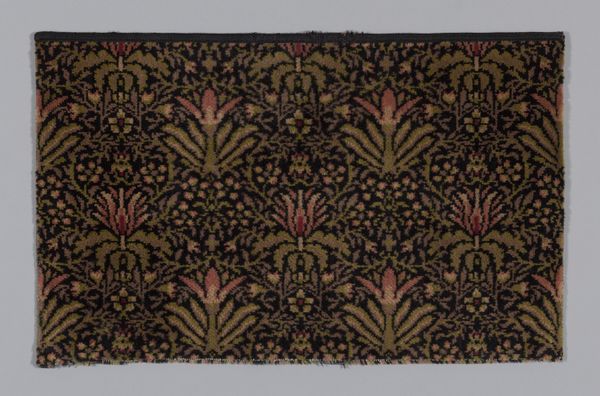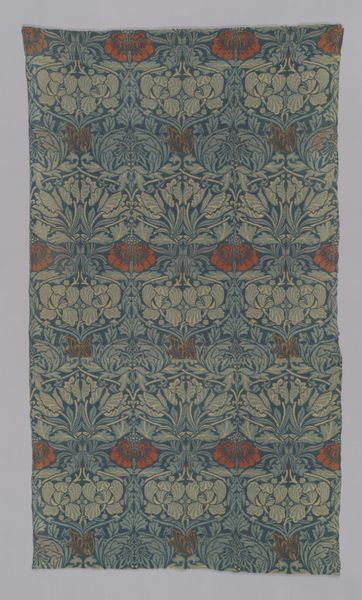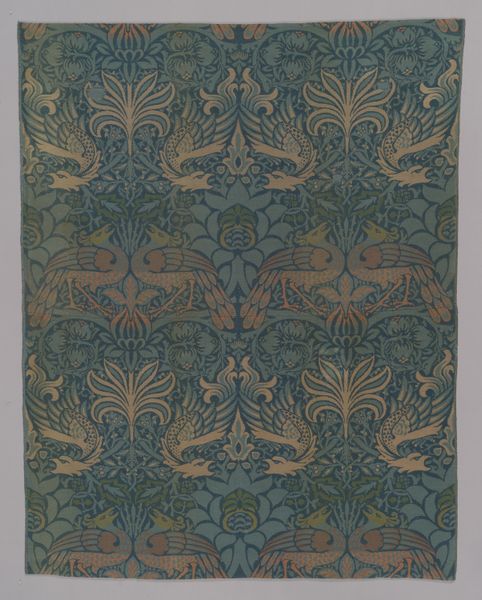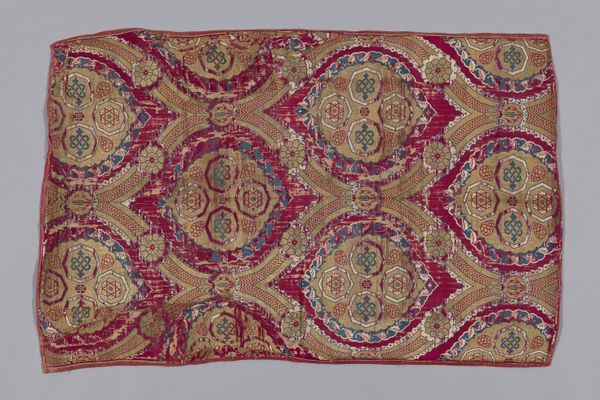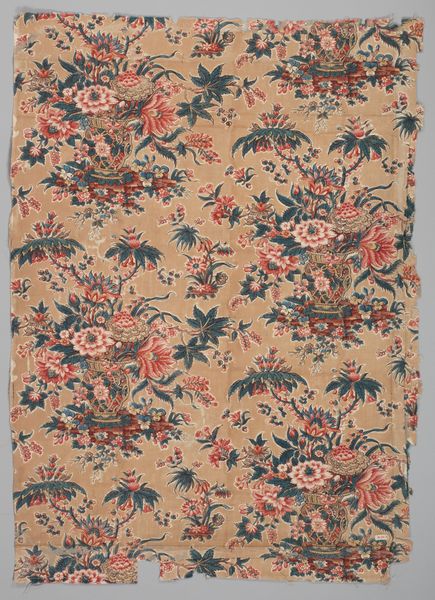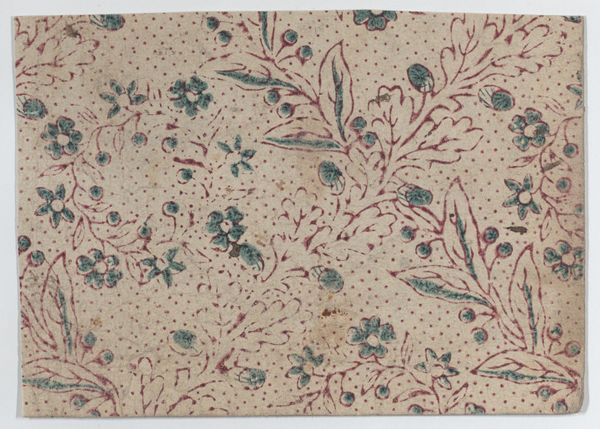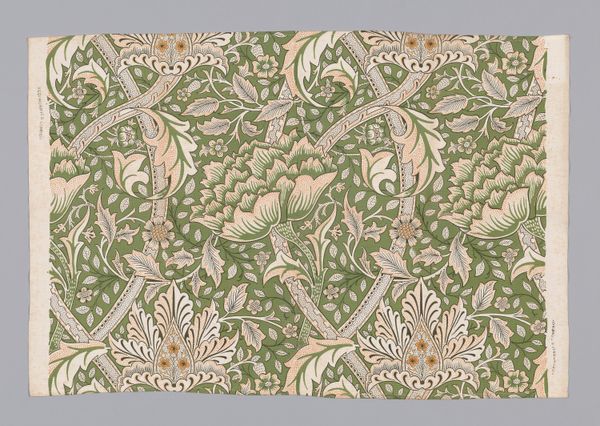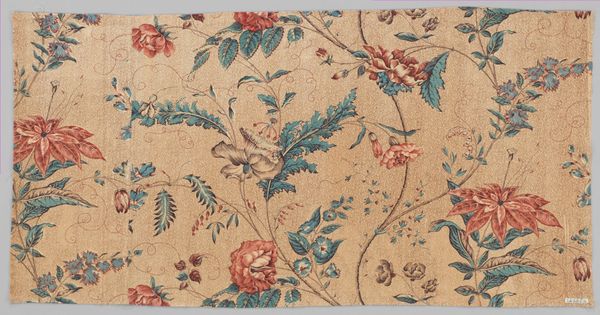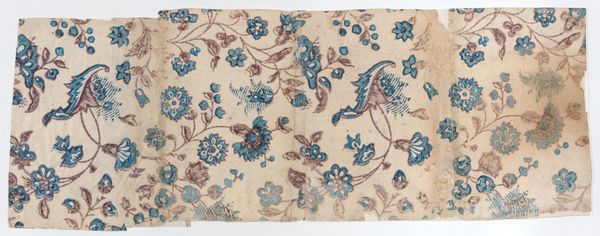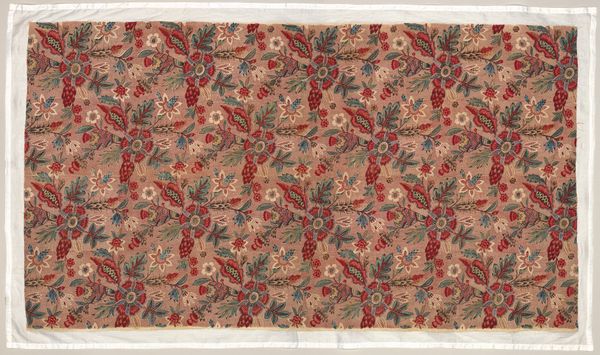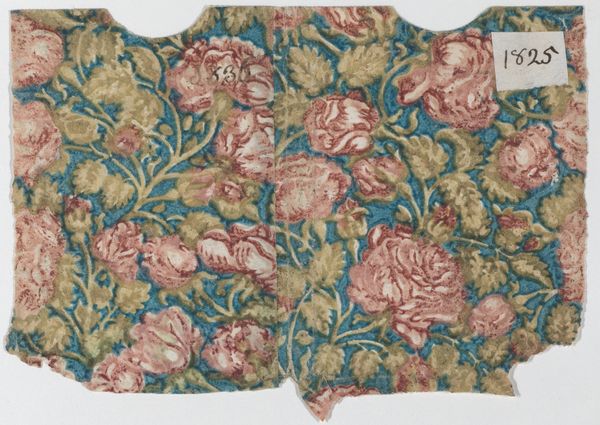
print, textile
#
naturalistic pattern
#
organic
# print
#
arts-&-crafts-movement
#
textile
#
geometric pattern
#
organic pattern
#
imprinted textile
Dimensions: 44.7 × 197.5 cm (17 5/8 × 77 3/4 in.) Repeat: 31 × 22.2 cm (12 1/4 × 8 3/4 in.)
Copyright: Public Domain
Curator: This woven textile, titled "Wey for a Valance," was crafted around 1883 by the multi-talented William Morris. You can find it right here at the Art Institute of Chicago. Editor: My first impression? Dense. It feels like looking into a forest undergrowth, a very stylized one, of course, but a kind of beautiful claustrophobia. Curator: Exactly. The piece is so characteristic of the Arts and Crafts movement he championed, a deliberate move against industrialization. Consider how a repeating floral pattern becomes not just decorative, but almost an argument for the handmade. Editor: It definitely challenges the Victorian idea of manufactured perfection. The slight imperfections, the little quirks in the weave – those almost seem like a political statement. The question then is, who were they making statements to? The growing middle class, hungry for aesthetics? Curator: Yes, though Morris's ideals were somewhat contradictory. He desired art for all but his products, particularly his textiles, were costly. It's this tension that gives the image meaning, in many respects, it points to the challenge of aligning ideology with market realities. The very pattern, organic and repeating, mirrors the endless cycles of production and consumption. Editor: I see that now, it's like a pre-industrial version of mass production! He gives the eye almost no rest. Did the imagery itself hold specific symbolic weight for Morris, or was he just selecting from the symbolic vocabulary that was current at the time? Curator: Both, I think. Flowers are of course almost universally evocative, symbols of life, death and rebirth. Morris’s choice here echoes medieval tapestries but presented within a distinctly Victorian social framework. This aesthetic framework then ties itself into broader cultural values around nature, industry, and class. Editor: That gives a different view of its impact! It's an attempt, successful or not, to weave politics into domestic life through these carefully chosen forms and symbols. And perhaps it prompts us to ask today, what stories our own domestic objects might tell about us? Curator: A fitting point to ponder as we move to the next work. Thanks!
Comments
No comments
Be the first to comment and join the conversation on the ultimate creative platform.

